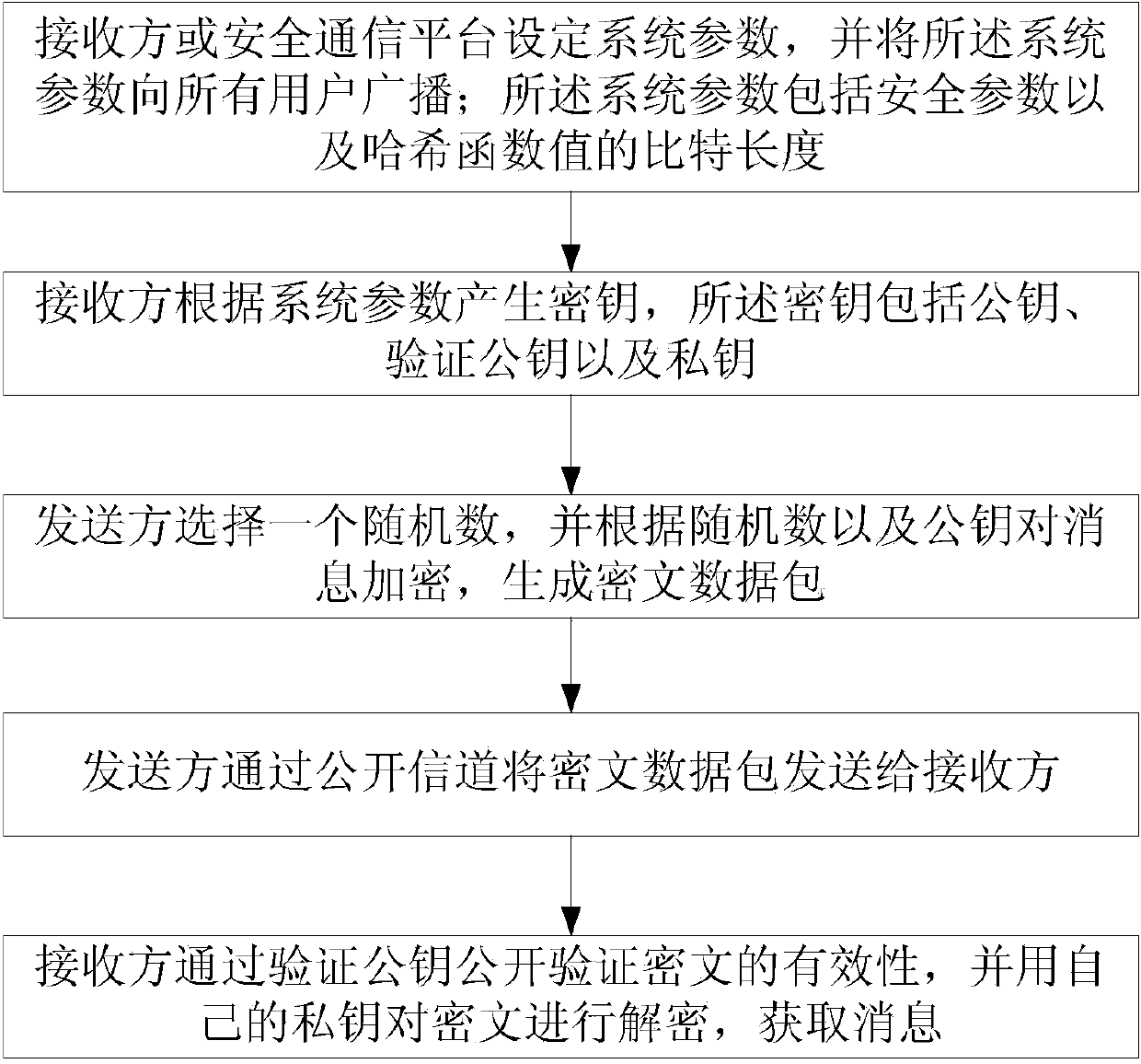Method for encrypting public key in signed quadratic residue class group
A secondary residual and public key encryption technology, which is applied to the public key of secure communication, digital transmission system, electrical components, etc., can solve the problems of low efficiency and inefficient one-time signature technology, etc.
- Summary
- Abstract
- Description
- Claims
- Application Information
AI Technical Summary
Problems solved by technology
Method used
Image
Examples
Embodiment Construction
[0036] The present invention will be described in detail below in conjunction with the accompanying drawings.
[0037] The invention provides a public key encryption method in a signed quadratic residual group, comprising the following steps:
[0038] Step 1: Set system parameters;
[0039] The receiver or a unified security communication platform is responsible for setting the security parameters. After the parameters are set, it is broadcast to all users; the system parameters to be set are as follows: k is a security parameter, and v is the bit length of the hash function value.
[0040] Step 2: Generate a key;
[0041] 2.1. The receiver selects two prime numbers P and Q according to the security parameter k, and calculates N=PQ, where P=2p+1, Q=2q+1, and both p and q are prime numbers;
[0042] 2.2. Choose a collision-resistant hash function H that satisfies Among them, Z N is the remainder group modulo N, is the signed quadratic residue group modulo N;
[0043] 2...
PUM
 Login to View More
Login to View More Abstract
Description
Claims
Application Information
 Login to View More
Login to View More - R&D Engineer
- R&D Manager
- IP Professional
- Industry Leading Data Capabilities
- Powerful AI technology
- Patent DNA Extraction
Browse by: Latest US Patents, China's latest patents, Technical Efficacy Thesaurus, Application Domain, Technology Topic, Popular Technical Reports.
© 2024 PatSnap. All rights reserved.Legal|Privacy policy|Modern Slavery Act Transparency Statement|Sitemap|About US| Contact US: help@patsnap.com










